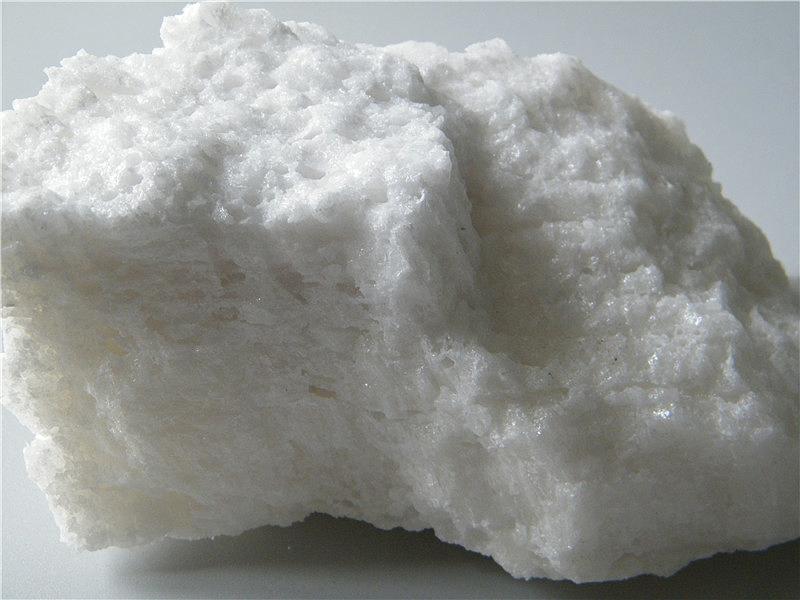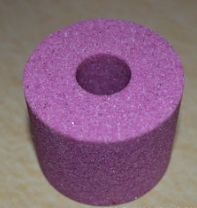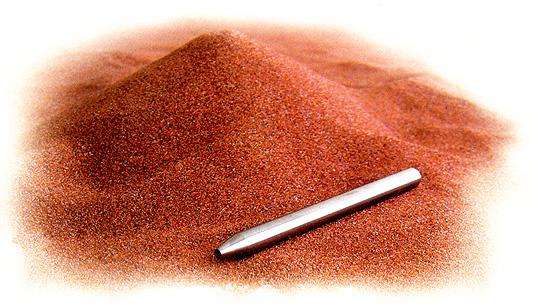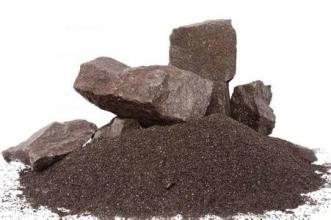Fused chromium corundum
The main component of red corundum is α-alumina, also called chromium corundum and ruby. Most of the artificial red corundum on the market now is artificial red corundum. Chrome corundum: The main mineral composition is α-Al2O3-Cr2O3 solid solution. The secondary mineral composition is a small amount of composite spinel (or no composite spinel) and refractory bricks with a chromium oxide content of 1% to 30%. There are two types: fused chromium corundum bricks and sintered chromium corundum bricks. Generally speaking, chrome corundum brick refers to sintered chromium corundum brick. Using α-Al2O3 as the raw material, add an appropriate amount of chromium oxide powder and chromium corundum clinker fine powder, shape it, and bake it at high temperature. The chromium oxide content of sintered chromium corundum bricks is generally lower than that of cast chromium corundum bricks. It can also be prepared by the mud casting method. Mix α-Al2O3 powder and chromium oxide powder evenly, add debonding agent and organic binder to make a thick mud, and add part of the chromium corundum clinker to make bricks by the grouting method. Then burn. It can be used as glass kiln lining, brushed glass flow hole cover brick and used in molten iron pretreatment device, garbage incinerator, coal water slurry pressurized gasification furnace backing, etc. In 1877, the French chemist Fremy used pure alumina powder, potassium carbonate, barium fluoride and a small amount of potassium dichromate as raw materials, and melted them at high temperature in a crucible for 8 days to obtain small-grained ruby crystals. This was the beginning of artificial rubies. . In 1900, scientists used aluminum oxide to melt and then added a small amount of chromium oxide and Cr2O3 at a weight ratio of 0.7% to produce 2g~~4g of ruby. Now, rubies and sapphires as large as 10g can be produced. In 1885, some high-quality artificial rubies appeared in Geneva, Switzerland. It was said that they were made from natural ruby fragments and potassium dichromate to enhance the red color, which were melted at high temperature and had the same properties as natural products. However, it is not possible to truly create artificial rubies. The introduction of large-scale production is attributed to the French chemist Werner Ye. Werner invented the flame fusion method in 1891, and used this method to trial-produce artificial gems. After success, he tested it with pure alumina. In a high-temperature muffle furnace, he used an inverted hydrogen-oxygen blowpipe to test, and the pure oxide containing a small amount of chromium oxide was tested. Aluminum fine powder slowly fell into the flame and melted, then dropped on the base to condense and crystallize. After ten years of hard work. In 1904, Werner officially produced artificial rubies. After that, the flame melting method was gradually perfected, and the rubies produced were almost indistinguishable from natural products. This method has been used until modern times and is still the main method for producing artificial gems in the world. It is known as " Vilna Yefa”. Now it only takes a few hours to produce ruby rough stones of more than 100 carats. Artificial corundum crystals with an inverted pear-shaped or carrot-shaped appearance. The texture is pure and the color transparency is even higher than that of natural products. The economic benefits are huge. The modern Werner leaf method can not only produce From light pink to deep red rubies, it can also produce sapphires of various colors, and even rubies and sapphires with starlight, which is really ingenious.








